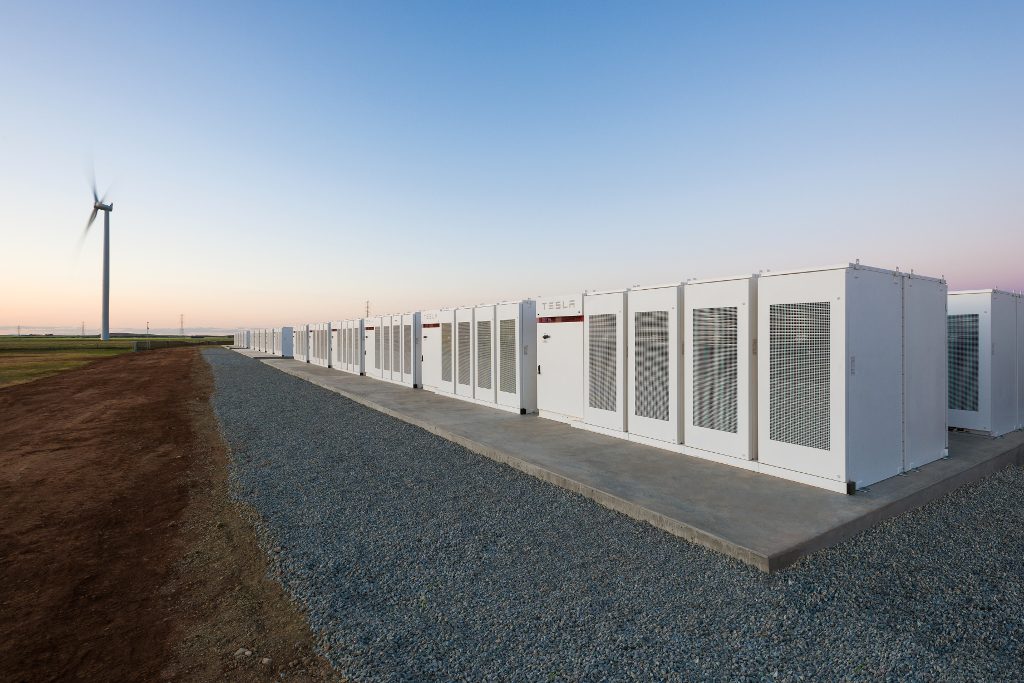
In the fall of 2017, Tesla took on the challenge of installing a 100-megawatt battery storage system in South Australia in under 100 days, promising that the system would be free if it was not built in time. The project was actually completed in 54 days.
The system is located at the Hornsdale Wind Farm, which consists of 99 wind turbines with a generation capacity of 315 MW. The Hornsdale Power Reserve installation is the world’s largest lithium-ion battery system and, after a year of operation,has proven to be a smashing success. Estimates are that the project has reduced costs associated with stabilizing the energy grid by about $29 million. The cost of the system was about $87 million, so it is paying for itself quite rapidly. The wind farm and battery systems are owned and operated by a French renewable energy company.
The battery storage system provides a variety of different services to the electric grid. The primary motivation for it was to achieve system security and reduce the risk of blackouts and load shedding. Having the battery system in place protects the regional interconnection from tripping,which reduces the risk of separation of South Australia from the National Electricity market. The system also provides so-called ancillary services such as frequency control and other forms of electricity supply regulation.
The most significant contribution of the Hornsdale Power Reserve is that it has raised the profile of energy storage technology and demonstrated its unique capabilities. Based on the success of the system, there are now about 2,500 MWh of new storage projects announced by the public and private sectors in Australia.
**********
Web Links
Tesla’s Battery Has Already Saved South Australia a Huge Amount of Money
Photo courtesy of Hornsdale Power Reserve.
Earth Wise is a production of WAMC Northeast Public Radio.
Leave a Reply